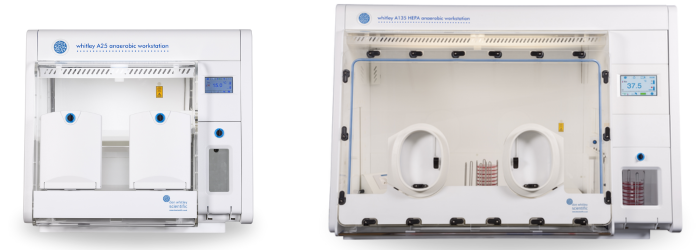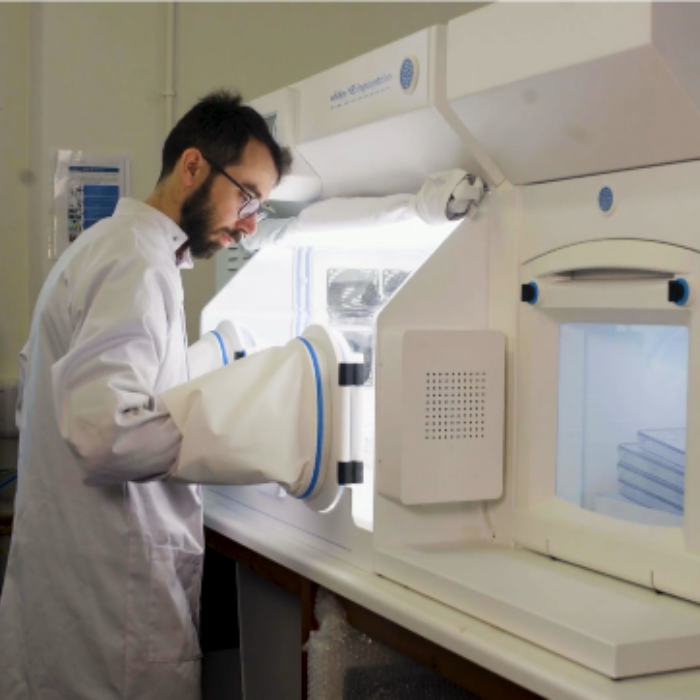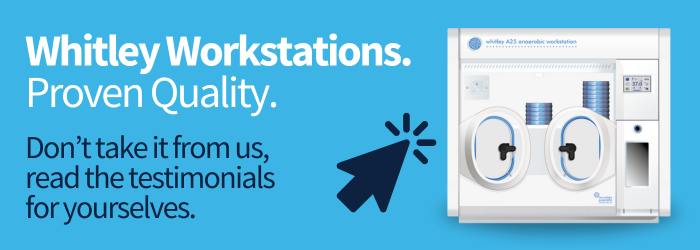
Proven Excellence: Why Whitley Workstations Reign Supreme
You can say that you are the best at something but it doesn’t really mean anything unless you can prove it. Don Whitley Scientific (DWS) says it designs, manufactures, sells and services the best anaerobic, hypoxic and microaerobic workstations in the world … and here’s the proof.
Reliability
Whitley Workstations are built to last. We manufacture in the UK so that we can continuously monitor the quality of the parts used to construct our products; we can provide the required high level of training to our engineers; and we can test each device in our own, on-site laboratories. This is why we are confident enough to guarantee our chambers for 10(?) years.
The proof? We have customers who have been using Whitley Workstations for over 30 years, returning to us again and again for their next purchases. The Microbiology Department at Blackpool Victoria NHS Trust has been using Whitley Workstations for over 25 years. Their current A45 Workstation was preceded by an MG1000 and a Mark3 before that.
Whiston Hospital, Merseyside recently replaced purchased a Whitley A25 to join the A35 and A45 that the hospital already owns.
The team at Leeds General Infirmary have five Whitley Workstations, as they “provide a reliable anaerobic atmosphere in which to incubate and manipulate samples”.
 Breadth of the range
Breadth of the range
Every laboratory is different. We sell to hospitals, contract laboratories, universities, specialist research organisations, private veterinary labs and they all have different requirements. The Whitley Workstation range is designed to be diverse enough to provide a solution for everyone, whatever the size of lab, throughput, number of users, equipment to be used inside, heating/refrigeration requirements, etc.
Have a look at our website to see how many different models of workstation we offer. Here’s a link to just the anaerobic cabinets: Anaerobic Workstations | Anaerobic Incubator - Don Whitley Scientific (dwscientific.com)
Continuous innovation
 Technology is constantly changing and the pace at which it affects us all is increasing. At DWS, we
Technology is constantly changing and the pace at which it affects us all is increasing. At DWS, we
believe in embracing this change to ensure that our products continue to reflect the latest innovations.
We write the workstation operating software in-
house and design the look of the screens. This has enabled us to keep pace with technologies such as remote monitoring, automatic sensor calibration, email alerts, and data downloading.
But it’s not just IT that changes so we have to continually research what else is needed. There is a renewed interest in HEPA filtration (an option we
have now built into most models); larger airlocks (5 sizes); smaller models for personal research (A20 and A25); larger, more flexible models for hub
laboratories; and removable fronts that are actually easy to remove (our novel latch system).
Listening to customers
Our business model allows us to be extremely flexible in terms of decision making and this comes in useful when customers have precise requirements. An example of this is when we were approached by Jon Vernon at the School of Dentistry in Leeds who needed a large workstation complete with oxygen, carbon dioxide, and hydrogen control to provide the flexibility to adjust the workstation’s atmosphere.
Jon explained, “To reflect the many clinical scenarios of the oral cavity, much of the microbiological research carried out with our group requires the culture of oral microbes and pathogens that demand highly controlled environments, such as one of oxygen depletion.”
The development of the Whitley M55 Workstation proved an ideal solution for Jon and his team. “The ability to alter the atmosphere within the chamber, beyond a purely anaerobic environment, really opens up new pathways, offering us the potential to investigate microbial interactions in defined environments, in the future.”
Specials
Having a flexible design and manufacturing team in the
UK also means we can produce ‘special’ products that require adaptation from our core range. One example of
this is the project for Dr Francesco Licausi at the University of Oxford, who tasked DWS with developing a hypoxic workstation with refrigeration, a light-proof cover, and special LED lighting to facilitate his research. The resultant modified
H85 Hypoxystation has provided a tailor-made solution
that Dr Licausi is extremely pleased with.
Post-sales service
Most of our customers need their workstations to operate 24/7 so we supply maintenance and repair contracts to ensure equipment is able to operate consistently. We don’t outsource this. We employ a team of engineers who are trained by, and have the support of, the people who design and build the workstations. We also supply the team with a comprehensive range of parts and consumables to help fix any issues on the spot and avoid downtime.
“We find them a reliable company who are always willing to help. They are a family company and we’ve had the same service engineer visit us for years. It’s nice to be able to get to know someone, someone that you can trust to get the job done.”
Joanne Reid, BMS Team Leader and Quality Manager, Jersey General Hospital.
Almost all our engineers are also trained to provide UKAS calibration/validation, so to save money on call-outs, we can schedule maintenance and UKAS to be done at the same time.
Moving forward
We are already thinking about the next generation of Whitley Workstations. At the Biomedical Science Congress in 2023, we began asking customers what current features they like and what would be useful to them in the future. This helps us to create the products that we know tomorrow’s scientists want, with the accessories they need, to continue to innovate in their own roles. Whether it’s finding a cure for Alzheimer’s or being able to diagnose the presence of a fastidious anaerobe, we want it to be a Whitley Workstation that you are using.
DWS started in 1976 and is still going strong, having weathered (to name just a few hurdles) the 2008 global financial crisis, Brexit, and a global pandemic! We plan to continue building the best quality anaerobic, hypoxic and microaerobic workstations for many years yet.


 en
en



 English
English